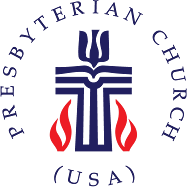 Posted each Thursday, Lectionary Ruminations focuses on the Scripture Readings, taken from the New Revised Standard Version, for the following Sunday per the Revised Common Lectionary Revised Common Lectionary. Comments and questions are intended to encourage reflection for readers preparing to teach, preach, or hear the Word. Reader comments are invited and encouraged. All lectionary links are to the New Revised Standard Version (NRSV) of the Bible via the PC(USA) Devotions and Readings website, but if you prefer another translation, feel free to use that instead. (Other references are linked to the NRSV via the oremus Bible Browser.)
Posted each Thursday, Lectionary Ruminations focuses on the Scripture Readings, taken from the New Revised Standard Version, for the following Sunday per the Revised Common Lectionary Revised Common Lectionary. Comments and questions are intended to encourage reflection for readers preparing to teach, preach, or hear the Word. Reader comments are invited and encouraged. All lectionary links are to the New Revised Standard Version (NRSV) of the Bible via the PC(USA) Devotions and Readings website, but if you prefer another translation, feel free to use that instead. (Other references are linked to the NRSV via the oremus Bible Browser.)Genesis 15:1-12, 17-18
v. 1 Is it worth noting that this reading describes a “vision” and not an actual historical event?
The LORD’s admonition “Do not be afraid” is echoed in verse 1 of today’s Psalm.
v. 5 I am wondering how many stars astronomers and astrophysicists have catalogued.
v. 18 I think the “made a covenant” is better translated “cut a covenant” especially considering the actions described in verse 10-11.
Note that the narrator and God use “LORD” while Abram uses “Lord GOD”. What shall we make of this literary device?
I think what is being described here is an ancient archetypal religious ceremony and that George Lucas, Steven Spielberg or Quinten Tarritino would have a field day translating for the big screen.
Psalm 27
v.1 This reminds me of a Taize chant
v. 4 Who among us today desires to “live in the house of the LORD all the days” of our life? After an hour or two of worship most folk are more than anxious to leave the sanctuary and head home?
vs. 5-6 Verse 4 refers to the LORD’s “house” and “temple” but verse 5 and 6 talk about the LORD’s “tent”. Is the psalmist confusing historical images? What difference does it make?
vs 7-9 Verses 1-6 speak of the LORD in the third person but with verse 7 the Psalmist shifts to direct address. Verses 10 and 13-14 also speak of the LORD in the third person while verses 11-12 return to direct address. How does this pattern inform our understanding of corporate and personal prayer?
Philippians 3:17-4:1
v. 17 Imitate “me” but follow our example. Undoubtedly the “me” is Paul. I presume the “us” is Paul and Timothy.
v. 18 What does it mean to be an “enemy of the cross of Christ”?
v. 20 In this age of partisanship—“tea parties” and a stalemate in congress over health care reform—what does it mean that “our citizenship is in heaven”?
v. 1 What does it mean to “stand firm in the Lord” and how do we do it? Might be ever confuse stubbornness and intransigence with standing firm?
Luke 13:31-35
Apparently there are no parallels for this passage other than a parallel of verse 34 in Matthew 23:37-39.
v. 31 Why are some Pharisees portrayed warning Jesus? What might they gain by warning him? What might they be risking by doing so?
v. 32 Can the “third day” be any less than a foreshadowing allusion to the resurrection?
v. 33 Similarly, can the statement that “it is impossible for a prophet to be killed outside of Jerusalem” be anything less than a foreshadowing allusion to the crucifixion and a before the fact claim that Jesus is a prophet?
v. 34 There are numerous biblical references to God’s “wings” including Ruth 2:12 and Psalm 17:8, but especially in the apocryphal book of 2 Esdras, 1:30, where God is spoken of, metaphorically, as a mother hen. But perhaps the Gospel accounts imfluenced the writer of 2 Esdras rather than the othger way around.
v. 35 See Psalm 118:26.
ADDENDUM
The Bible in the masthead photo is The New Oxford Annotated Bible Third Edition New Revised Standard Version with the Apocrypha. It is the Bible I keep and use at North Church Queens, where I serve as Designated Pastor. I use and keep at home an older first edition of the The New Oxford Annotated Bible with the Apocrypha, which I purchased soon after it was published. It is filled with underlining, marginal notes, and a few odds and ends slipped in among its pages. I like the way the TNOAB displays the NRSV textual apparatus and appreciate the editor’s notes at the bottom of the page. I have also found some of the introductory articles quite useful.
I was raised on the Revised Standard Version (RSV), which was the version my home church used in Sunday School and Worship. All the Scripture I memorized was from the RSV, so when the NRSV was published I sympathized with older Christians who complained about the RSV when it was published because they had memorized Scripture from the King James. Nevertheless, the NRSV is my translation of choice.
Along with the Bible in the photo is some swag I have collected from various General Assemblies, including a magnetic plastic book mark from the Office of the General Assembly (OGA), a slick paper bookmark from the PC(USA) Office of Spiritual Formation, and a pen from the Presbyterian Publishing Corporation. The Bible is opened to the beginning two pages of the Gospel According to John because the fourth Gospel is my favorite and because my name is John.








No comments:
Post a Comment